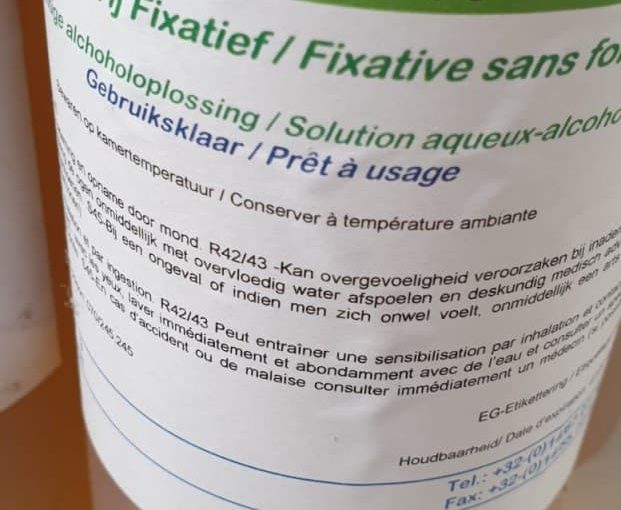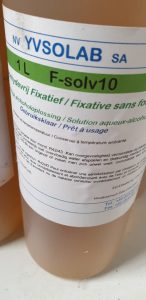
Perfluorooctane sulfonate (PFOS) is amongst the most considerable natural pollution and is broadly distributed in the setting, wildlife, and people. Its poisonous results and organic hazards are related to its lengthy elimination half-life in people. However, the way it impacts renal tubular cells (RTCs) stays unclear.
In this examine, PFOS was noticed to mediate the improve in reactive oxygen species (ROS) technology, adopted by the activation of the extracellular-signal-regulated kinase half of (ERK1/2) pathway, which induced autophagy in RTCs. Although PFOS remedy induced autophagy after 6 h, extended remedy (24 h) diminished the autophagic flux by rising lysosomal membrane permeability (LMP), resulting in elevated p62 protein accumulation and subsequent apoptosis.
The improve in LMP was visualized through elevated inexperienced fluorescence with acridine orange staining, and this was attenuated by 3-methyladenine, an autophagy inhibitor. N-acetyl cysteine and an inhibitor of the mitogen-activated protein kinase kinases (U0126) attenuated autophagy and apoptosis.
Taken collectively, these outcomes point out that ROS activation and ROS-mediated phosphorylated ERK1/2 activation are important to activate autophagy, ensuing in the apoptosis of PFOS-treated RTCs. Our findings present perception into the mechanism of PFOS-mediated renal toxicity.
Cell-extracellular matrix (ECM) detachment is understood to down-regulate ERK signalling, an intracellular pathway that’s central for management of cell behaviour. How cell-ECM detachment is linked to down-regulation of ERK signalling, nonetheless, is incompletely understood. Depletion of PHB2 suppressed cell-ECM adhesion induced ERK activation
We present right here that focal adhesion protein Ras Suppressor 1 (RSU1) performs a vital position in cell-ECM detachment induced down-regulation of ERK signalling. We have recognized prohibitin 2 (PHB2), a element of membrane lipid rafts, as a novel binding protein of RSU1, and mapped a serious RSU1-binding website to PHB2 amino acids 150-206 in the C-terminal area of the PHB/SPFH (stomatin/prohibitin/flotillin/HflKC) area.
The PHB2-binding is mediated by a number of websites situated in the N-terminal leucine-rich repeat (LRR) area of RSU-1. . Furthermore, cell-ECM detachment elevated RSU1 affiliation with membrane lipid rafts and interplay with PHB2. Expression of venus-tagged wild-type RSU1, however not that of venus-tagged PHB2-binding faulty RSU1 mutant in which the N-terminal
Finally, knockout of RSU1 or inhibition of RSU1 interplay with PHB2 by overexpression of the main RSU1-binding PHB2 fragment (amino acids 150-206) successfully suppressed the cell-ECM detachment induced down-regulation of ERK signalling. LRR area is deleted, restored cell-ECM detachment induced down-regulation of ERK signalling. Our outcomes establish a novel RSU1-PHB2 signalling axis that senses cell-ECM detachment and hyperlinks it to down-regulation of ERK signalling.
Renalase, a novel flavoprotein that’s primarily expressed in the kidney and coronary heart, performs a vital position in hypertension. Recent research have proven that renalase is expressed at low ranges in the serum of sufferers with coronary heart failure, whereas the position of renalase and its mechanism in cardiac failure is unclear.
Adult Sprague-Dawley (SD) rats had been used to research the position and operate of renalase in the pathological course of of transverse aortic constriction (TAC)-induced coronary heart failure. Renalase-human protein chip evaluation confirmed that renalase was straight related to P38 and extracellular signal-regulated protein kinase half of (ERK1/2) signaling.
We additional used lentivirus-mediated RNA interference to check the position of renalase in the development of pathological ventricular hypertrophy and discovered that renalase inhibition attenuated the noradrenaline-induced hypertrophic response in vitro or the strain overload-induced hypertrophic response in vivo.
Recombinant renalase protein considerably alleviated strain overload-induced cardiac failure and was related to P38 and ERK1/2 signaling. These findings show that renalase is a possible biomarker of hypertrophy and that exogenous recombinant renalase is a possible and novel drug for coronary heart failure.

Chemotherapy-induced peripheral neuropathy is a standard issue in limiting remedy which might end result in remedy cessation or dose discount. Gabapentin, a calcium channel inhibitor, and duloxetine, a serotonin noradrenaline reuptake inhibitor, are used to deal with a spread of ache circumstances corresponding to continual low again ache, postherpetic neuralgia, and diabetic neuropathy.
It has been reported that administration of gabapentin suppressed oxaliplatin- and paclitaxel-induced mechanical hyperalgesia in rats. Moreover, duloxetine has been proven to suppress oxaliplatin-induced chilly allodynia in rats. However, the mechanisms by which these medication forestall oxaliplatin- and paclitaxel-induced neuropathy stay unknown.
Behavioral assays had been carried out utilizing chilly plate and the von Frey check. The expression ranges of proteins had been examined utilizing western blot evaluation. In this examine, we investigated the mechanisms by which gabapentin and duloxetine forestall oxaliplatin- and paclitaxel-induced neuropathy in mice.
We discovered that gabapentin and duloxetine prevented the growth of oxaliplatin- and paclitaxel-induced chilly and mechanical allodynia. In addition, our outcomes revealed that gabapentin and duloxetine suppressed extracellular signal-regulated protein kinase half of (ERK1/2) phosphorylation in the spinal wire of mice.
[Linking template=”default” type=”products” search=”Extracellular Signal-Regulated Kinase 1” header=”2″ limit=”142″ start=”3″ showCatalogNumber=”true” showSize=”true” showSupplier=”true” showPrice=”true” showDescription=”true” showAdditionalInformation=”true” showImage=”true” showSchemaMarkup=”true” imageWidth=”” imageHeight=””]
Moreover, PD0325901 prevented the growth of oxaliplatin- and paclitaxel-induced neuropathic-like ache conduct by inhibiting ERK1/2 activation in the spinal wire of mice. In abstract, our findings counsel that gabapentin, duloxetine, and PD0325901 forestall the growth of oxaliplatin- and paclitaxel-induced neuropathic-like ache conduct by inhibiting ERK1/2 phosphorylation in mice. Therefore, inhibiting ERK1/2 phosphorylation might be an efficient preventive technique towards oxaliplatin- and paclitaxel-induced neuropathy.